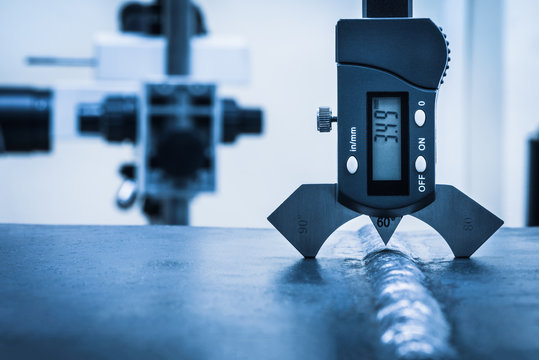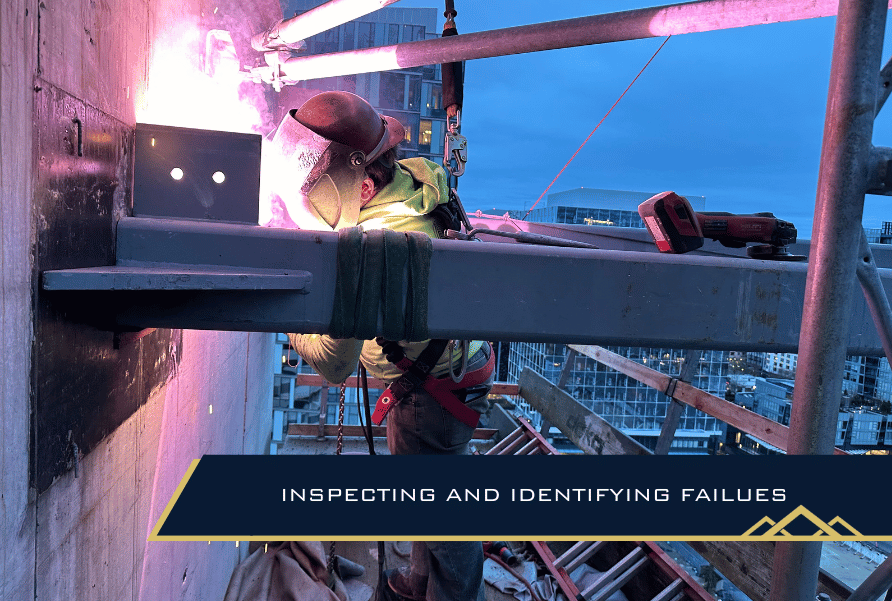Just How Reliable Welding Evaluation Boosts Architectural Integrity and Long Life
In the realm of construction and design, the value of welding inspection can not be overstated, as it plays a critical role in ensuring structural integrity and extending the life-span of tasks. Join the exploration of how efficient welding inspections can change potential susceptabilities into strengths, adding to the enduring success of building and constructions.
Relevance of Welding Examination
Making sure the structural integrity and safety and security of bonded buildings mandates rigorous welding assessment procedures. Welding inspection serves as a crucial safeguard in the building and production industries, where the strength and resilience of joints considerably affect the overall efficiency of structures.
Along with security, welding assessment plays a crucial role in quality control. By adhering to established requirements, examinations determine the uniformity of welds, guaranteeing that each meets the preferred toughness and visual needs. This consistency is essential not only for safety but likewise for preserving the credibility and integrity of makers and manufacturers. Furthermore, regulative compliance is a significant driver of welding inspection methods. Market standards and codes, such as those from the American Welding Culture (AWS) or the International Organization for Standardization (ISO), require adherence to strict guidelines, highlighting the value of examinations in meeting these legal and professional responsibilities.
Trick Examination Strategies

Ultrasonic Evaluating (UT) makes use of high-frequency acoustic waves to spot subsurface problems, providing precise information regarding weld integrity without triggering any damage. Radiographic Evaluating (RT), entailing X-rays or gamma rays, provides a comprehensive photo of the weld's inner framework, revealing surprise flaws. Magnetic Fragment Evaluating (MPT) is another non-destructive method, specifically reliable for finding surface area and near-surface gaps in ferromagnetic materials.
Penetrant Testing (PT) includes the application of a liquid dye to disclose surface-breaking flaws, providing a economical and simple option for non-porous materials. Each technique has its specific applications, strengths, and constraints, and typically a combination of approaches is utilized to achieve comprehensive examination results. Proficiency of these techniques boosts the reliability and toughness of welded structures, aligning with safety and security and performance expectations.
Identifying Common Problems

Porosity, identified by gas pockets within the weld, reduces the weld's stamina and durability. It commonly arises from pollutants or inappropriate shielding gas. Fractures, which can take place throughout or after welding, pose considerable threats due to their prospective to circulate under stress and anxiety. They frequently develop from too much stress, fast air conditioning, or inappropriate weld layout.
Incomplete combination, where the weld metal falls short to bond entirely with the base product, weakens the structural integrity, leading to weak joints. Slag inclusions take place when non-metallic products are caught in the weld, compromising its strength and top quality.
Determining these problems through meticulous examination techniques, such as aesthetic assessment, ultrasonic testing, or radiography, is essential. Addressing these problems makes sure weld high quality, ultimately sustaining the structural integrity and security of the developed environment.

Enhancing Architectural Efficiency
Recognizing the significance of identifying typical weld defects naturally brings about exploring techniques for boosting structural performance. The fundamental approach for enhancing efficiency entails utilizing innovative welding techniques and products that minimize defect incident. Making use of top quality filler products and making certain proper warm control can considerably reduce issues such as porosity and splitting, therefore boosting the weld's integrity.
Incorporating advanced welding modern technologies, such as laser welding and rubbing stir welding, more intensifies architectural resilience. These techniques provide exceptional precision and lowered thermal distortion, straight influencing the resilience and strength of the welded structures. Taking on automated welding systems can make certain regular and repeatable weld high quality, lessening human mistake.
Furthermore, carrying out extensive pre-weld and post-weld procedures is important. Appropriate joint style, surface prep work, and stress-relieving processes contribute to optimal weld efficiency. Performing complete pre-weld assessments enables early detection of possible concerns, promoting prompt corrections before they endanger the framework.
Long-lasting Advantages of Examination

Through alert examination practices, the long-lasting advantages to architectural integrity ended up being progressively noticeable. Detailed and consistent welding assessments play a crucial function in stopping architectural failings by recognizing you can look here defects and variances early in the building and construction procedure.
In addition, regular evaluations contribute to preserving compliance with market standards and policies, thus preventing monetary and legal consequences. This adherence to high quality assurance not only improves the dependability of the structure however likewise fosters trust among stakeholders, consisting of clients, engineers, and regulatory bodies. The comprehensive documentation of inspection end results offers as a beneficial source for read more future repair and maintenance initiatives, promoting notified decision-making.
In enhancement, reliable evaluation methods support development by incorporating innovative innovations such as non-destructive testing and electronic imaging, which can enhance accuracy and performance. This technological integration better highlights the commitment to quality in structural honesty. Eventually, investing in thorough welding assessments is a prudent approach that produces significant long-lasting benefits, guarding both the economic and physical investment in infrastructure jobs.
Conclusion
Efficient welding inspection plays a crucial duty in enhancing architectural integrity and durability by recognizing problems early in the building and construction process. Making use of techniques such as aesthetic inspection, ultrasonic screening, and radiographic screening guarantees the discovery of problems like splits and porosity that compromise weld toughness. Rigorous examinations ensure conformity with sector requirements, thus prolonging the life expectancy of frameworks, minimizing expensive fixings, and fostering stakeholder count on in the integrity and safety of welded buildings.
In the world of construction and engineering, the significance of welding assessment can not be overemphasized, as it plays a pivotal role in making sure architectural honesty and extending the lifespan of projects.Guaranteeing the architectural honesty and safety and basics security of bonded building and constructions mandates rigorous welding evaluation processes.Structure upon the importance of welding assessment in securing architectural integrity, comprehending the vital assessment methods becomes essential for reliable application. Effective welding evaluation includes a range of methods designed to assess weld high quality, guaranteeing compliance with stringent design criteria - Welding Inspection Madison.Reliable welding examination plays a critical duty in boosting structural integrity and longevity by identifying issues early in the building and construction procedure